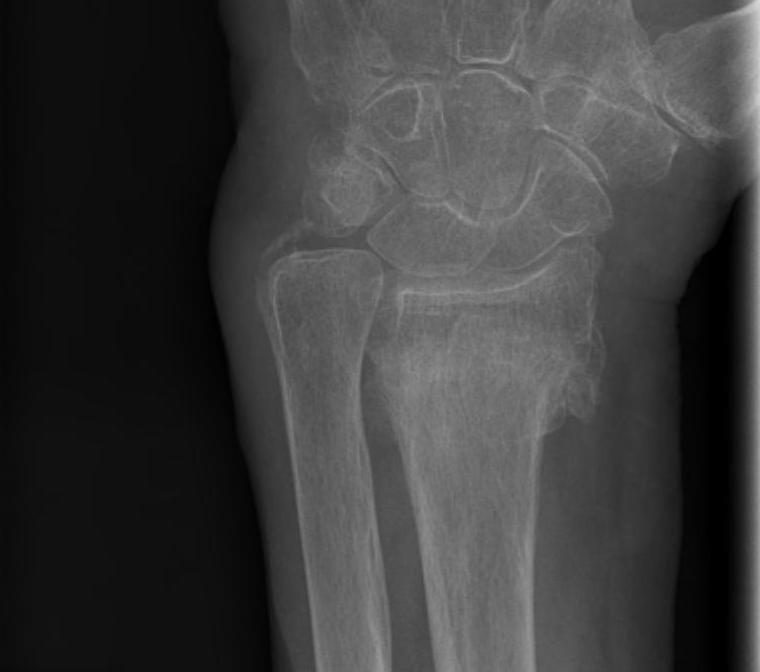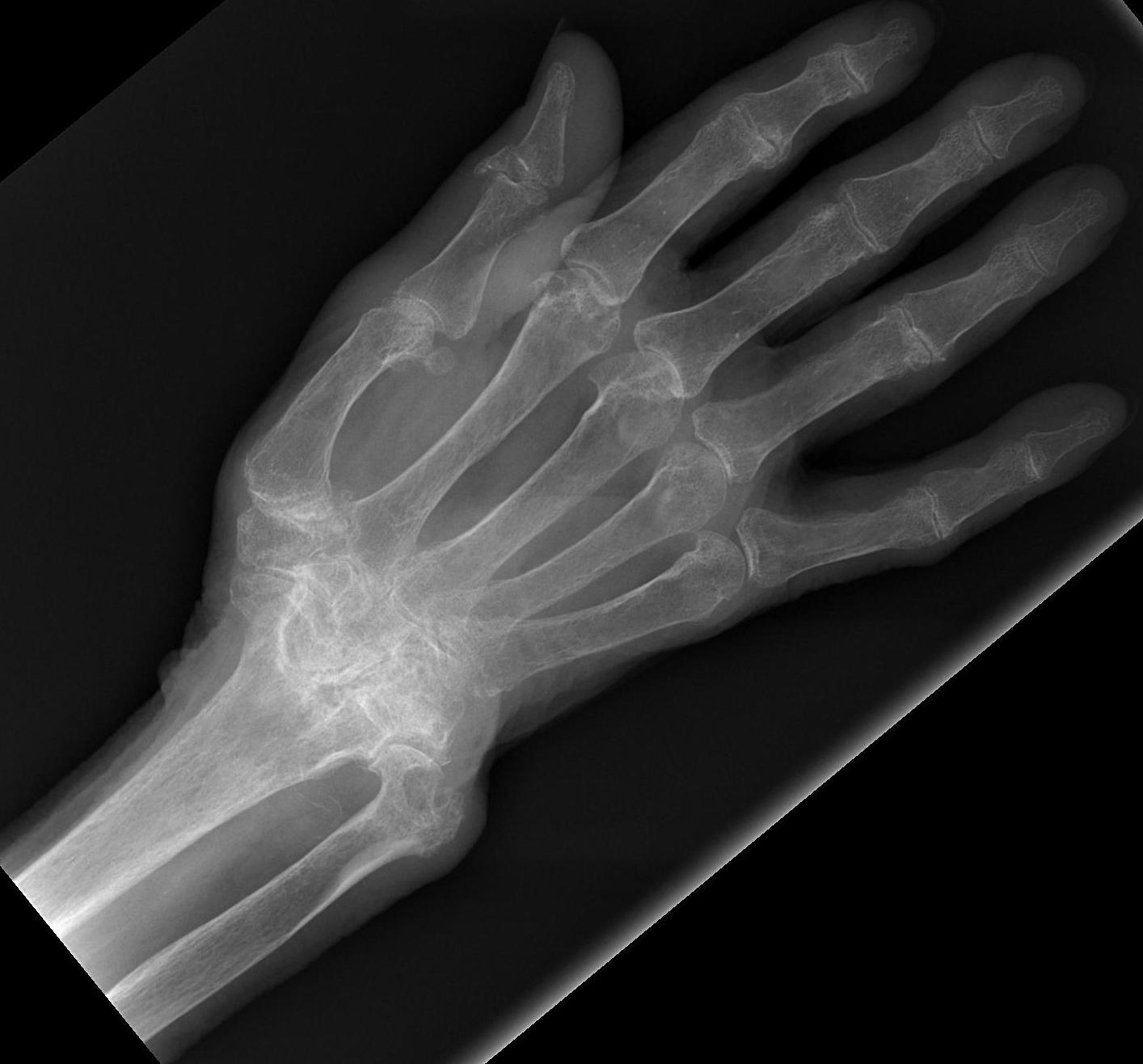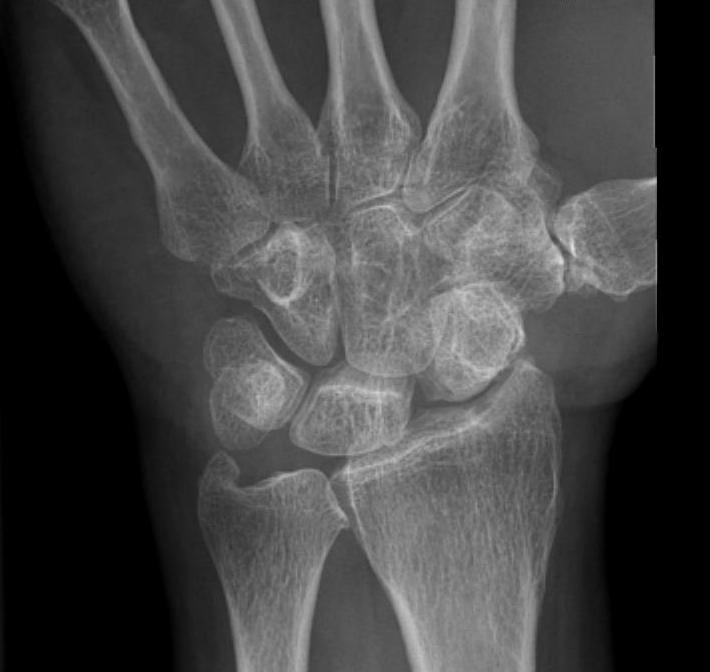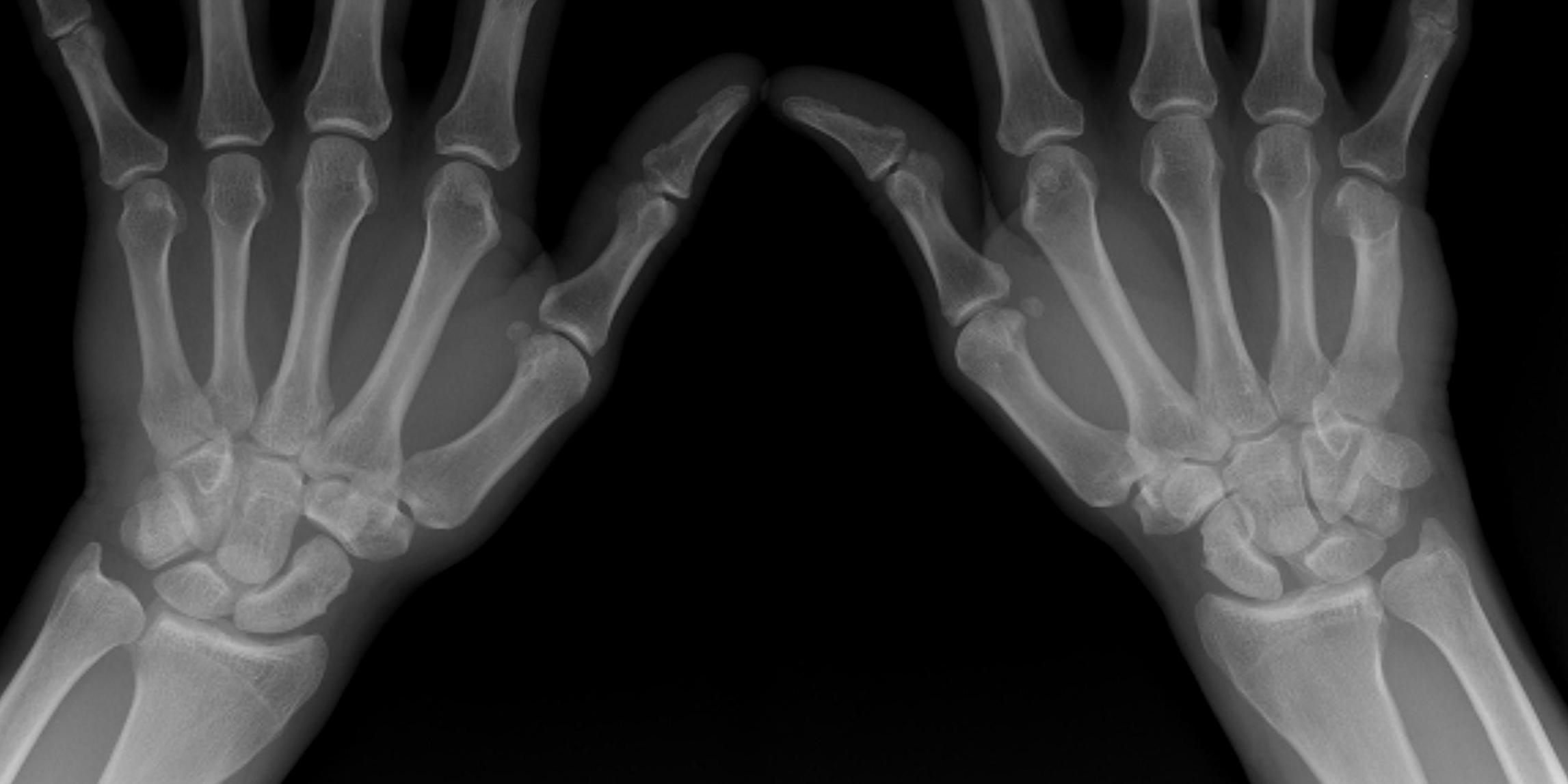Flexor Tendon Sheath Infections
Aetiology
S. aureus / Strept
- usually a history of trauma
S. aureus / Strept
- usually a history of trauma
Abscess of terminal pulp
Unacceptable position of radius post fracture
1. Radial Shortening > 4mm at DRUJ

2. Radial Inclination < 15°
2 groups
1. Elderly
- low velocity injury
- osteoporotic
- need to start bisphosphonates
2. Young patients
- high velocity injury
Distal Radius Angles
- radial volar tilt 11°
- radial inclination 22°
- radius is 11 mm longer than ulna
- ulna variance 2mm positive on average

Extremely common
- 90% by 10 years have wrist problems
Landsmeer 1961
- treat wrist at same time as treat fingers or will recur
Frequently combine procedures
- synovectomy
- tendon transfer
- ulna procedure
Avascular necrosis & subsequent disintegration of lunate
50-75% history of trauma
Occasionally seen in sickle cell / steroid use
Trauma disrupting vascularity
- single incident with disruption of blood supply
Volar Intercalated Segmental Instability
- secondary to injury to the lunate-triquetral ligament
Less common
Caused by fall on outstretched extended wrist
- hypothenar eminence strikes ground first
- isolated LT ligament injury
Can be part of perilunate dislocation
- SL heals
- residual LT laxity

Scapho-lunate advanced collapse
- caused by malalignment of scaphoid on radius
- due to scapholunate disruption
Most common cause of wrist OA
1. Radio-scaphoid degenerative changes
- from abnormal flexion of scaphoid

Dorsal Intercalated Segmental Instability / CID
Scapholunate joint
- C shaped
- 2-3 mm thick dorsally with transverse fibres
- thin palmar
Dorsal extrinsic ligaments
- V shaped, onto trapezium
Extremely uncommon
Stability provided by joint capsule /costoclavicular & interclavicular ligaments
Recurrent instability uncommon
Many apparent dislocations in adolescents may be growth plate injuries
-will remodel without treatment
If OA from chronic dislocation may resect SCJ